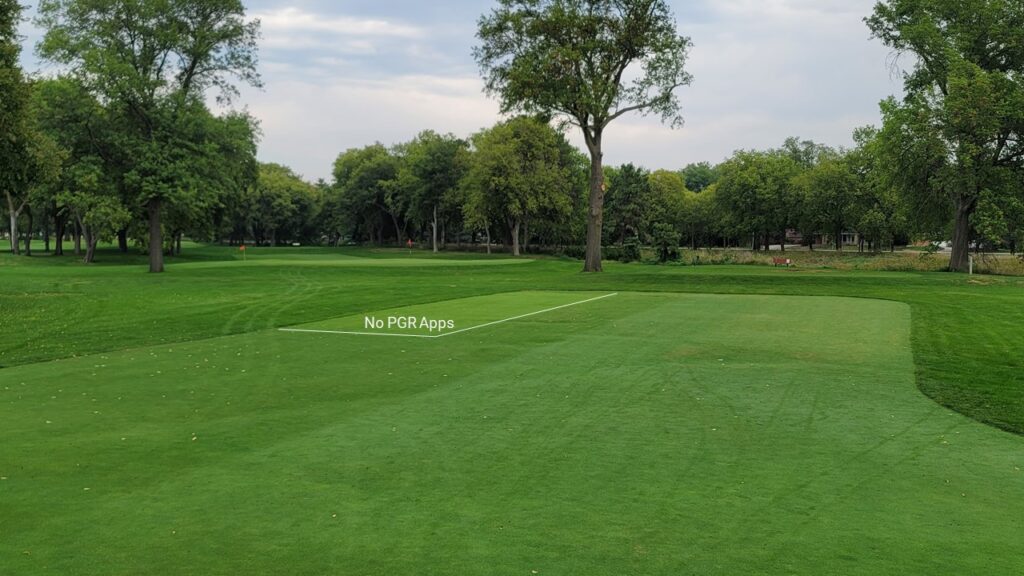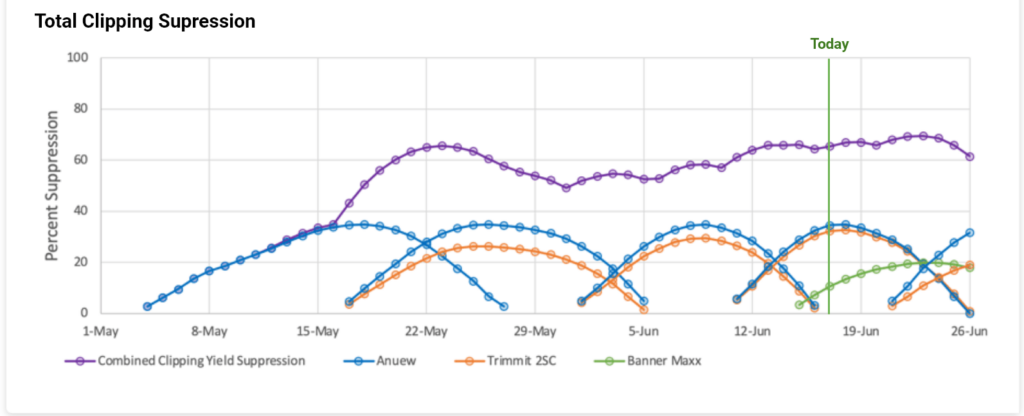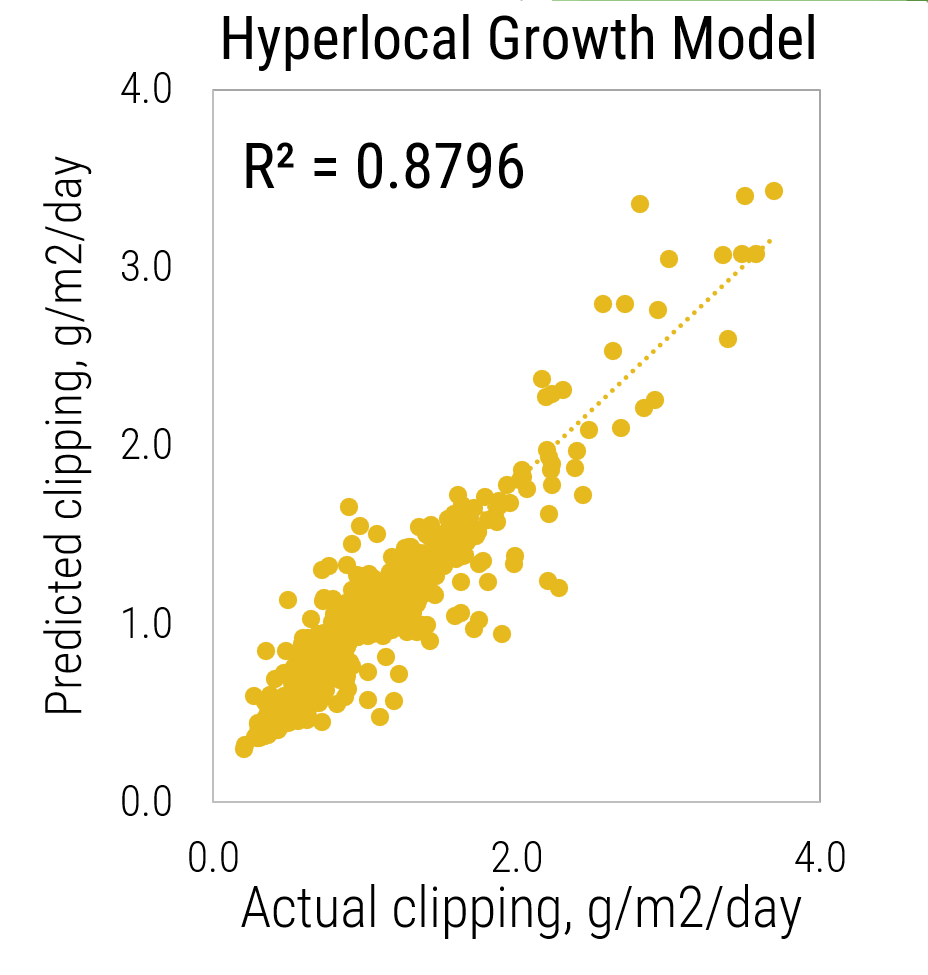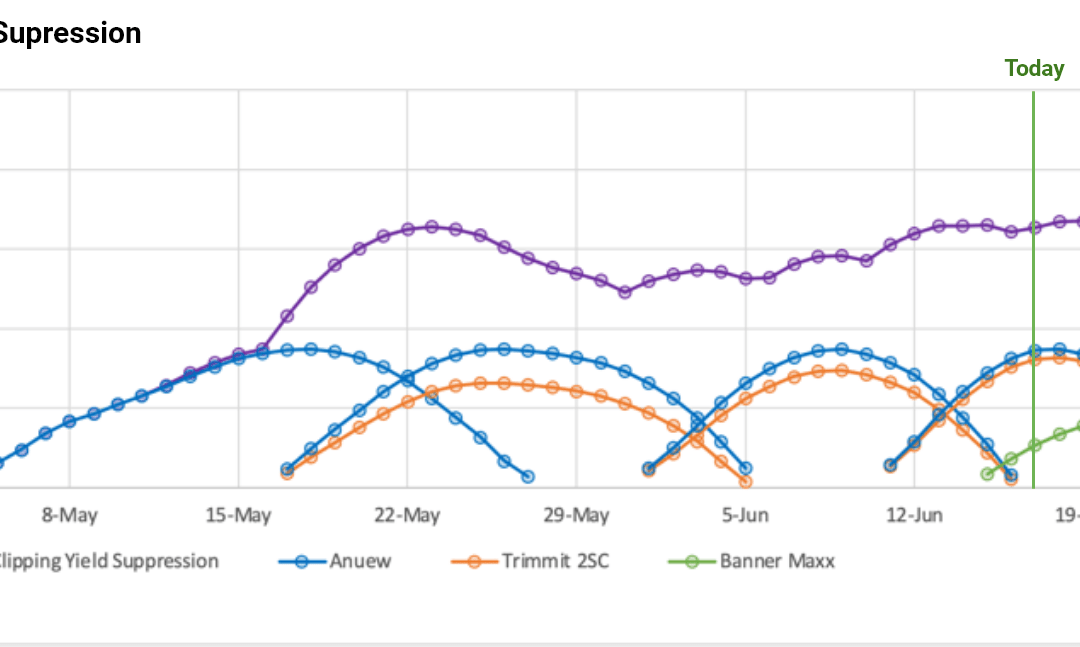For nearly 15 years, Dr. Doug Soldat and I have been creating growing degree day (GDD) models for plant growth regulators (PGRs) and now DMI fungicides. These sinewave shaped models predict how these routinely applied products affect the relative growth rate of various turfgrass areas. We’ve created models for different grass species, at various mowing heights and across a range of application rates. GreenKeeper App uses these 700+ GDD models to automatically informs users how PGRs & DMIs are changing growth rate, and it provides a recommended GDD re-interval to schedule follow-up applications. Fifteen years later and it is time to move beyond GDD intervals. There is a better way to schedule PGR applications, and it offers more flexibility and decision-support to superintendents and turf managers.
What’s wrong with GDd intervals?
I’ve spent the last decade promoting PGR GDD intervals in written articles or during webinars, so this article might seem a bit surprising. While the GDD re-application concept is still an effective way to sustain growth suppression (see the below image), it is not without problems. For example, some golf course superintendents can only spray on certain days. Growing degree day intervals might call for a PGR application on a weekend or during a club event. When should the manager make that next application, a few days earlier or later? What happens to the clipping suppression if that application isn’t precisely timed? Can a lower application rated be used if an application is a few days early? What’s the correct GDD interval if two products like Anuew (prohexadione-Ca) and Cutless MEC (fluprimidol) are mixed? Clearly there are challenges when following a strict GDD re-application schedule. While these can generally be solved with some assumptions, there is still a better way.

holistic approach to growth management
To be clear, I’m not saying that GDD-based models are wrong and should be discarded. It is the complete opposite, actually. These PGR models quite accurately predict turf growth response. Instead of viewing PGR & DMI applications individually however, the individual model outputs should be shown in combination to understand how all products have impacted growth rate. The real objective in designing a PGR program is not to hit specific GDD re-application intervals for individual PGRs, but sustain a uniform growth rate over a period of time for all products that influence growth rate.

The new Growth Management portal is currently being built into a new Program Builder within GreenKeeper App. Program Builder will help users craft a comprehensive agronomic program including planned pest control, cultivation events, and growth management with fertilizers and PGRs. The top chart of the Growth Management portal will display the seven-day average of the measured clipping volume (blue line) and the hypothetical clipping volume if PGRs had not been applied (purple line) over the last 45 days. The lower chart shows the relative suppression of the individual PGR & DMI applications (blue, orange and green lines) plus the combined growth suppression for all the applications in purple. This chart also shows how suppression is expected to change in the future based on the weather forecast.
This Growth Management Portal will give turf managers much better clarity when scheduling PGR and nitrogen fertilizer applications. It will help answer the tough questions. For example, what will happen if user applied Trimmit 2SC and Anuew on June 21 at 6 fl oz/A of each? How is the Banner Maxx application on June 15 (45 fl oz/A) influencing growth? Is there a potential for too much growth suppression? This growth portal allows users to create scenarios to answer these questions ahead of the next PGR, DMI or nitrogen application. It will also grant GreenKeeper users flexibility with PGR timing. Users can predict the response from an early or late application. They will be able to adjust application rates to optimize the combined growth response a week into the future (purple line).
models will improve with your own data

Our ultimate goal is to integrate machine-learning technologies into GreenKeeper to create hyperlocal growth models from a users’ own data. Measured clipping volume – entered into GreenKeeper’s Performance Tracker – can be correlated with factors including weather conditions, time of year, application records automatically. The end result is a growth prediction model that is specific only to each users’ golf course. This approach has been shown to be highly effective by Dr. Soldat’s lab, and it could be expanded to predict other performance metrics including quality, green speed and surface firmness. The time is approaching where GreenKeeper users will receive PGR and N rate guidance to help hit their performance goals days or weeks in the future. Until then, we encourage GreenKeeper App users to enter their data Performance Tracker to build these powerful models.
It’s Time to move beyond GDD intervals
Growing degree day models provide clarity when using PGRs and DMI fungicides. While GDD intervals can help schedule re-applications of individual PGR, they reduce application flexibility and are limited when when multiple PGRs or DMIs are used. Any basic turfgrass app or website can track GDD accumulation, but only GreenKeeper App has over 700 GDD models to show how PGRs and DMI fungicides are impacting growth rate. The release of our new Program Builder with Growth Management portal at the GCSAA Conference and Trade Show in San Deigo will provide users a new level of clarity that no other tool can provide. Learn more about GreenKeeper at GreenKeeperApp.com and more about PGR scheduling in my GreenKeeper University course. Registration is now open and classes start on Nov 30, 2021. Register and view all the courses at LearnTurf.com and click “Advanced Courses.”


Trackbacks/Pingbacks